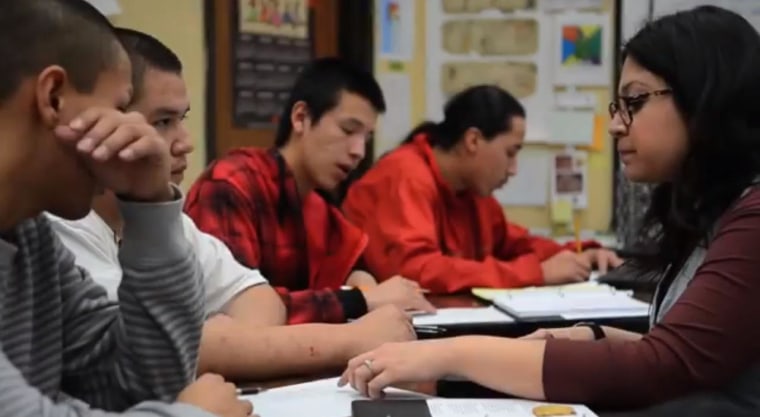"You won’t amount to anything." "You’ll never be able to do it, so why try?" These are just a few of the thoughts that were embedded in my mind as I searched to find my way as the only Native student amongst a student body of hundreds, a stark contrast from my life on the reservation.
I am a proud member of the San Poil Band of the Colville Confederated Tribe. I grew up on a reservation and attended Paschal Sherman Indian School. I have fond memories of learning geometry through basket weaving and studying star knowledge as a part of my science curriculum. My school emphasized the importance of aural learning skills and as a child, I developed the ability to focus and recall information as I listened to elders recite descriptive tribal tales. In the classroom, I exceled and worked hard to learn and exemplify the traditions and values of my tribe.
However, when my family and I moved from the reservation to a town an hour south of Seattle, I was faced with a harsh reality. I was nearly three years behind in reading and writing compared to my peers in my new school. Instead of embracing my differences or working with me to overcome my setbacks, many of my teachers decided that there really wasn’t anything they could do to help me. At school, I had few close friends and felt that even they didn’t quite understand me either. When it was time to apply for college, I received minimal guidance or counseling. In fact, I was never asked about my college aspirations, and no one took the time to explain the college or FASFA applications to me. Upon graduation, I had no college plans or a road map for my life after high school.
It was from these experiences that I gathered the determination to succeed, despite the odds, and recognized that the traditions of life on a reservation did not have to determine my ultimate level of achievement.
Native children experience some of the highest levels of poverty in our country greatly impacting their academic and life options. According to the Bureau of Indian Education Schools, the high school graduation rate amongst Native children is 46 percent, and just 11 percent obtain a college degree. It was while I was working toward my master’s degree in Native American Studies that I realized what role I could play to improve the educational outcomes for Native students. A fellow University of Oklahoma classmate, and Teach For America alum, insisted that my place was in the classroom after observing me teach undergraduates.
Teach For America’s mission to build the movement to eliminate educational inequity and, specifically, its commitment to advocating for Native education equity through the Native Alliance Initiative resonated with me. Through this initiative, Teach For America works to deepen its partnership with Native communities. Currently, over 400 corps members are teaching more than 15,000 children from Native backgrounds.
When I entered the Crazy Horse School on the Pine Ridge Indian Reservation in South Dakota, I knew I would provide a better educational experience for my students than I had received. My teachers looked at my Native culture as a deficit, but I would use my students’ as an asset. Recently, I taught a lesson that required my students to examine the works of Zora Neale Hurston. I was able to leverage the oral storytelling and listening skills of our culture as I guided them through critical thinking exercises related to the literature. By reading passages aloud and allowing my students to listen to one another and engage in relevant discussion throughout the lesson, my students were able to deliver dynamite presentations. I understand how they learn and what obstacles they may encounter along the way, allowing me to exercise their strengths and quell their weaknesses.
Each day as I enter the doors of Crazy Horse I aspire to be a familiar face of hope and an example of promise for students facing adversity. But the work doesn’t end there, because we have so much more to do as a nation to grow culturally responsive teaching of our Native Students. They are diamonds, and they deserve teachers who excavate their strengths and allow them to shine.
